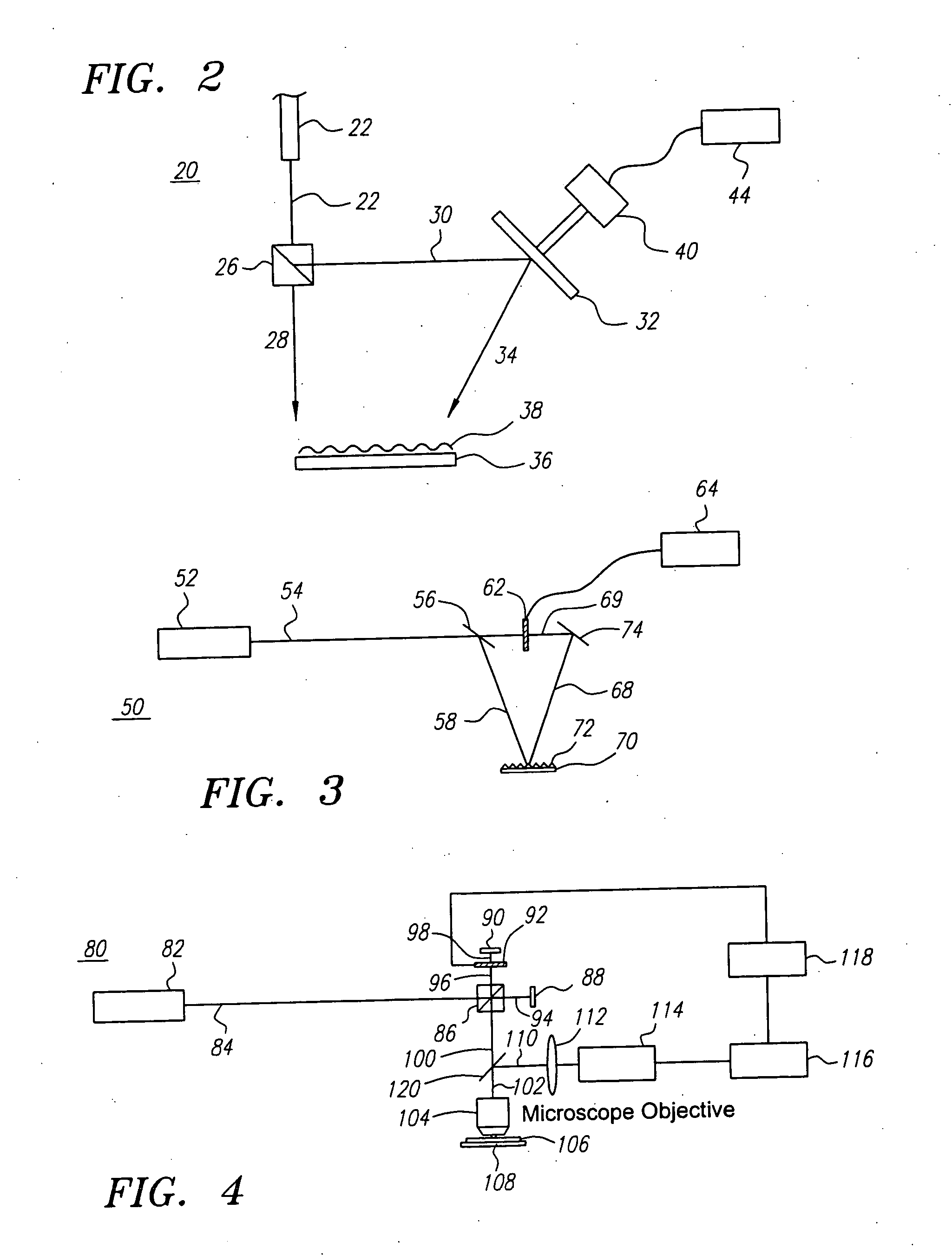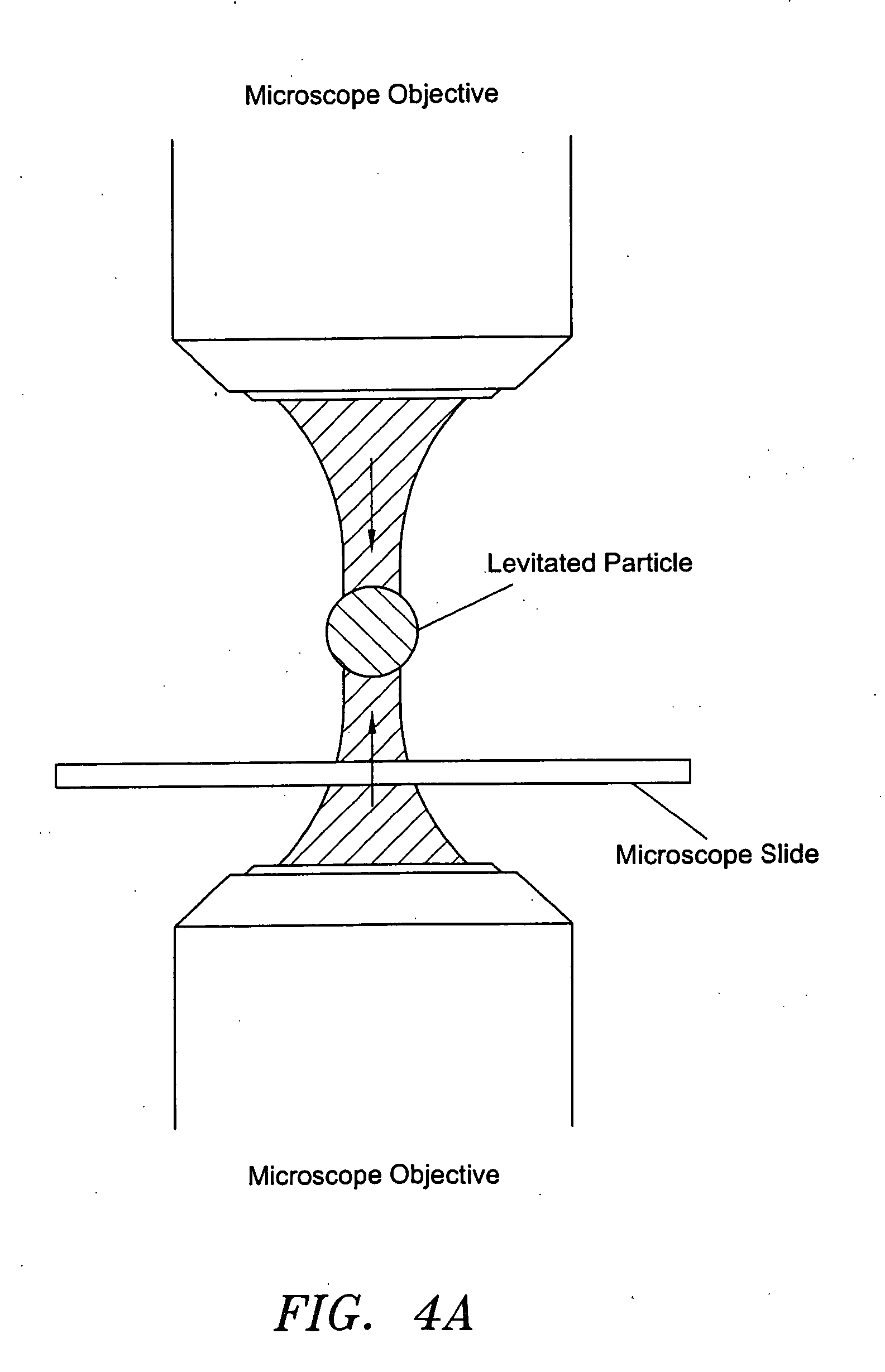Methods and apparatus for use of optical forces for identification, characterization and/or sorting of particles
- Summary
- Abstract
- Description
- Claims
- Application Information
AI Technical Summary
Benefits of technology
Problems solved by technology
Method used
Image
Examples
Embodiment Construction
Definitions
[0075] The following definitions are provided for an understanding of the invention disclosed herein.
[0076]“Dielectric constant” is defined to be that property which determines the electrostatic energy stored per unit volume for unit potential gradient. (See, e.g., the New IEEE Standard Dictionary Of Electrical And Electronics Terms,© 1993).
[0077] The “optical dielectric constant” is the dielectric constant of a particle or thing at optical wavelengths. Generally, the optical wavelength range is from 150 Å to 30,000 Å.
[0078] An “optical gradient field” is an optical pattern having a variation in one or more parameters including intensity, wavelength or frequency, phase, polarization or other parameters relating to the optical energy. When generated by an interferometer, an optical gradient field or pattern may also be called an optical fringe field or fringe pattern, or variants thereof.
[0079] A “moving optical gradient field” is an optical gradient field that moves...
PUM
 Login to View More
Login to View More Abstract
Description
Claims
Application Information
 Login to View More
Login to View More - R&D
- Intellectual Property
- Life Sciences
- Materials
- Tech Scout
- Unparalleled Data Quality
- Higher Quality Content
- 60% Fewer Hallucinations
Browse by: Latest US Patents, China's latest patents, Technical Efficacy Thesaurus, Application Domain, Technology Topic, Popular Technical Reports.
© 2025 PatSnap. All rights reserved.Legal|Privacy policy|Modern Slavery Act Transparency Statement|Sitemap|About US| Contact US: help@patsnap.com



